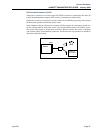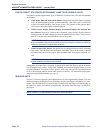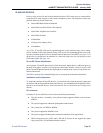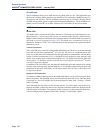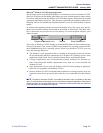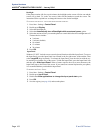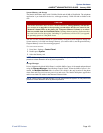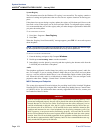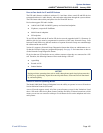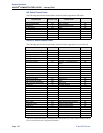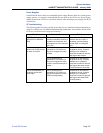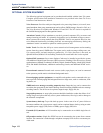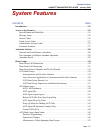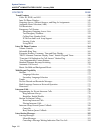
Page 105
System Hardware
AXXESS
®
ADMINISTRATOR’S GUIDE – January 2004
IP and SIP Devices
Peer-to-Peer Audio for IP and SIP Devices
The P2P audio feature, available in software V8.1 and later, allows certain IP and SIP devices
to transmit and receive audio directly with each other rather than through the system cabinet.
The P2P feature reduces delay and packet loss for IP and SIP devices.
Devices that support P2P audio include:
• AudioCodes™ MP-104 MGCP gateway and associated endpoints
• IP phones, except the IP SoftPhone
• Multi-Protocol endpoints
• SIP endpoints
To use P2P, the IPRC and the IP and/or SIP devices must be upgraded with V8.1 firmware. In
addition, the devices must be programmed as members of the same Network Group. Calls
between IP and SIP devices that are members of separate Network Groups are routed through
the cabinet and do not use P2P.
Version 8.1 supports a Network Group Diagnostics feature that allows an administrator to ver-
ify that the Network Groups are programmed properly. See page 42 for instructions on how to
use the Network Group Diagnostics feature.
IP devices that use P2P audio do not use cabinet resources when they are connected in a P2P
call. Therefore, the following features will not work during a P2P call:
• Agent Help
• Record-A-Call
• Station Monitor
Axxess IP and SIP Operating Modes
The Model 8000 Multi-Protocol Endpoints have the ability to operate in Axxess IP mode or
Session Initiation Protocol (SIP) mode.
Axxess IP mode supports nearly all of the system features except for the limitations listed
above. SIP mode offers basic phone features and the flexibility of shared extensions, which
means you can use one extension with up to five different devices on the telephone and voice
mail systems.
NOTICE
Passing real-time streaming data, such as audio, through encrypted virtual private networks
(VPNs) may significantly impact the network performance, router and firewall functional-
ity, and audio quality.



